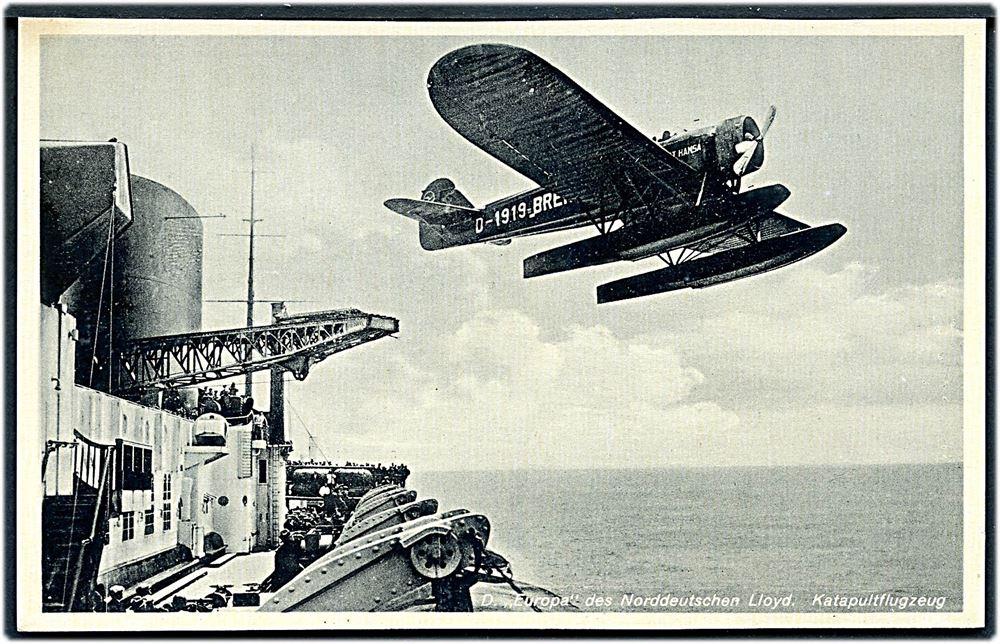| Type |
Two seat mailplane |
| Engine |
1 Pratt & Whitney Hornet A |
| Dimensions |
Length 11,78 m , height 4,69 m , span 17,20 m , wing area 49,4 m2 , |
| Weights |
Empty 1850 kg, loaded 3140 kg, max. take off weight |
| Performance |
Max.. speed 204 km/h , cruising speed 160 km/h , range 1130 km, endurance , service ceiling 3800 m , climb |
| Type |
Werk.Nr |
Registration |
History |
|
|
D-1919 |
Atlantik, continued in service on Europa until replaced by Junkers Ju 46 floatplanes. |

"For the Europa (Europe) named fast trans-Atlantic steamer, Heinkel developed not only the improved catapult K 4, but also the powerful mailplane He 58, that left the workshop in Warnemünde in 1930. From general construction the layout corresponded to its predecessor HE 12a, but the two crew members were now seated side-by-side. Compared to the HE 12a, that was assigned to the Bremen (Europa's sister ship), the slightly larger aircraft showed an increased gross weight of 2,600 to 3,140 kg that was balanced through the use of a 525 hp Pratt & Whitney Hornet A radial engine. Apart from an increased mail load of 160 to 220 kg, an extended range of 850 to 1,130 km was recorded as well.
On its first mail flight on September 15, 1930, the aircraft attracted favorable attention. To cover the 2,585 km long stretch from Nova Scotia to New York it needed a pure flight time of eighteen hours, shrinking the mail transport time between Berlin and New York by eighteen hours, an exceptional performance. Over the next few months, the He 58, carrying the registration D-1919, conducted further flights. It had its original engine replaced by a BMW license-built Hornet, that was fitted with a NACA cowling to improve air flow around the cylinders. After the HE 12a crashed off the coast of Nova Scotia on October 5, 1931, the He 58 was transferred to the Bremen. Successor to the He 58 on the Europa became the Junkers Ju 46 in 1932."


